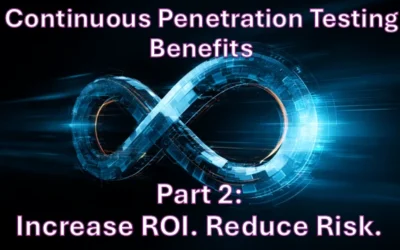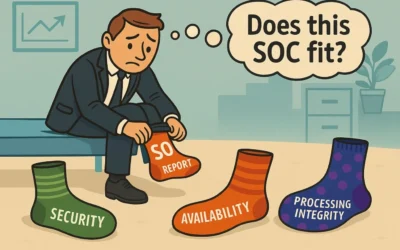For years, tabletop exercises (TTXs) have been a go-to method for testing an organization’s cybersecurity response plan. But as cyber threats evolve and real-world attacks grow more complex, so too must the way we simulate and prepare for them.
Gone are the days of flip charts and hypothetical drills. Today’s most effective tabletop exercises are dynamic, scenario-based simulations that do more than test procedures, they build confidence, uncover blind spots, and strengthen collaboration across departments.
Here’s how to design a tabletop exercise that actually prepares your team for the real thing, and how modern techniques like purple teaming and adversary simulation can take your readiness to the next level.
Set Clear Objectives and Scope
Start by answering the question: What are we trying to learn or improve? Is this exercise focused on:
- Validating the incident response plan?
- Stress-testing executive decision-making?
- Evaluating communications under pressure?
Scoping your objectives ensures the scenario stays focused and your outcomes are actionable. For example, if your goal is to test data breach escalation paths, your injects and participants should reflect that, not drift into general security awareness.
Make It Real (Not Just Relevant)
Generic ransomware? Outdated phishing emails? Not anymore.
Modern tabletop exercises must mirror real-world tactics, techniques, and procedures (TTPs), from MFA fatigue attacks and deepfake calls to cloud misconfigurations and supply chain breaches.
Want engagement? Use actual threat intelligence. Simulate something your organization might really face, or even something a peer in your industry already has.
Involve the Right People in the Right Roles
Effective response isn’t just about technology, it’s about people.
Bring together IT, security, legal, HR, PR, and executive leadership. Everyone has a role to play in a real incident, and the tabletop should reflect that. Assign participants realistic roles and responsibilities based on their actual jobs.
Pro tip: Keep observers to a minimum unless you’re running a training exercise. Too many passive attendees dilute the conversation.
Use Injects to Add Pressure and Complexity
Injects simulate escalation and force real-time decision-making. They also test how well your teams communicate and adapt under changing circumstances.
Examples:
- “Your customer support line is receiving angry calls.”
- “The attacker just posted your data online.”
- “Your CEO’s credentials were used to access a finance system.”
Time-based and event-driven injects mimic the chaos of a real breach, helping teams build the calm-through-crisis muscle memory they’ll need.
Why Tabletop Exercises Fail, And How to Avoid It
Too many exercises fall flat. Why?
- The scenario is too vague or unrealistic
- Participants don’t engage because they don’t see the value
- There’s no follow-up, so lessons learned fade quickly
To avoid this:
- Start with crystal-clear goals
- Make the scenario immersive and business-relevant
- Always debrief and assign follow-ups
Your exercise is only as valuable as the changes it drives afterward.
Don’t Just Train, Build Institutional Memory
TTXs are an opportunity to codify what works and fix what doesn’t. They also help document informal knowledge, how people actually communicate, escalate, and adapt.
Capture takeaways and turn them into:
- Playbook updates
- Onboarding and training guides
- Future exercise inputs
That’s how you turn a one-off simulation into long-term resilience.
Validate Your Controls with Adversary Simulation
Tabletop exercises simulate the response. Penetration testing and adversary simulations test your defenses and validate your controls against actual attacks.
At SynerComm, our Adversary Simulation (AdSim) services complement tabletop exercises by actively testing your technical detection and prevention capabilities through real-world penetration testing. These controlled engagements:
- Emulate real adversary behavior and tactics
- Validate logging, alerting, and escalation workflows
- Identify where technical controls and visibility gaps exist
By combining TTXs with AdSim, you can answer two critical questions:
- Will our team respond correctly when something happens?
- Will our systems detect it in time to make a difference?
This pairing helps close the loop between policy and practice, between simulation and reality.
Advanced Scenario: The artifacts and breadcrumbs left from a penetration test can be used as an evidence trail to follow during an incident response tabletop exercise.
The Future of Tabletop Exercises: Smart, Fast, and AI-Enhanced
Tabletops are already evolving. Emerging approaches include:
- AI-generated injects that reflect threat actor behavior
- Predictive modeling based on your security history
- Integration with purple team simulations to test and train simultaneously
While not every organization is ready for AI-powered tabletops today, the direction is clear: more realism, more automation, and more value.
Want Help? Let’s Talk.
SynerComm offers custom tabletop exercises, penetration testing, application assessments, hash and password cracking and analysis, red team engagements, and full-spectrum adversary simulation services designed to meet your security and compliance needs. Whether you’re building your first tabletop or validating complex enterprise controls, we’ll help you build a program that actually works, when it counts most.




